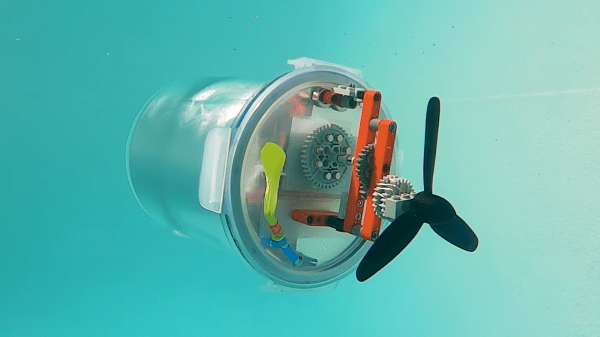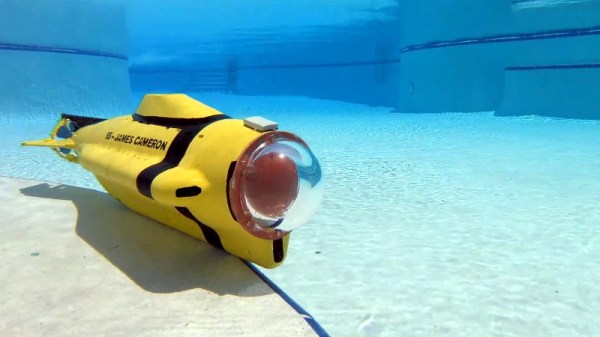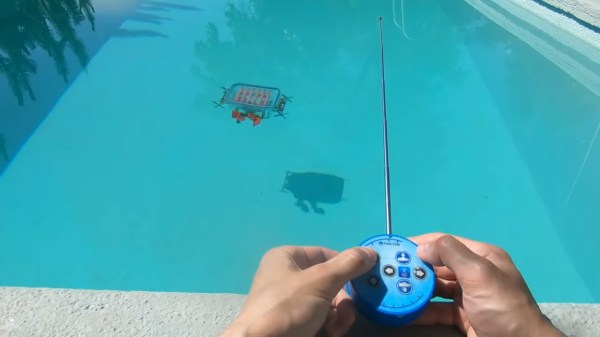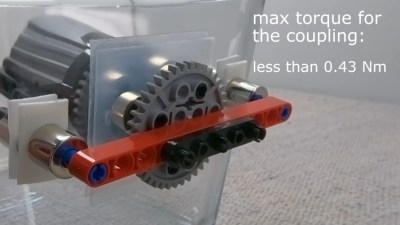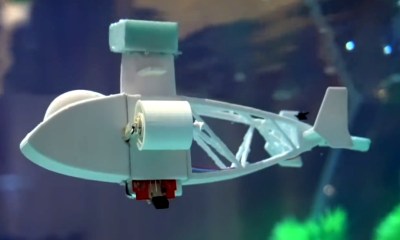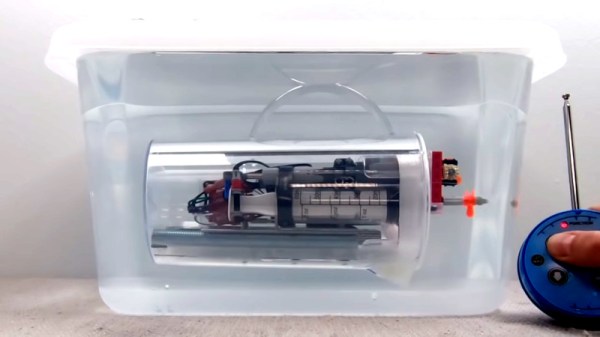Lego is a fun building block which vast numbers of the world’s children play with every day. However, the mechanical Technic line of Lego building blocks has long offered greater options to the budding engineer. [Brick Experiment Channel] is one such soul, working hard on their latest Lego submarine.
The sub is built inside of a glass food container, chosen for its removable plastic lid with a watertight seal. This keeps all the mechanics dry, as well as the custom electronics built to allow a 27MHz RC controller to send signals to the Lego electronics. This is key as higher frequency radios such as Bluetooth or WiFi can’t penetrate water nearly as well.
A magnetic coupling fitted to a Lego motor is used to drive the propeller in the water without the leaks common when trying to seal a rotating shaft. A second coupling on a Lego servo along with a creative steering arrangement allows the propeller to be turned to steer the craft.
The ballast system is simple. A balloon is filled by a Lego motor running an air pump, capable of 3.0 mL a second and capable of creating a maximum pressure of 2.0 bar. When the balloon is inflated, the buoyancy goes up and the sub rises. Run the motor the other way and the balloon is emptied by a clever clutch and valve arrangement, reducing buoyancy and causing the sub to sink.
The sub isn’t perfect. Maintaining a set depth underwater can be difficult with the rudimentary ballast system, perhaps as the balloon changes shape with varying water pressure. Sometimes, Lego axles slip out of their gears, too, and the radio only works for a few meters under water.
However, simply building a Lego sub of any sort is a remarkable feat. It’s interesting to see the variances in the design compared to earlier projects from [Brick Experiment Channel], too, as we’ve featured their earlier subs before. Video after the break.
Continue reading “Lego Submarine Gets Balloon Ballast System”

